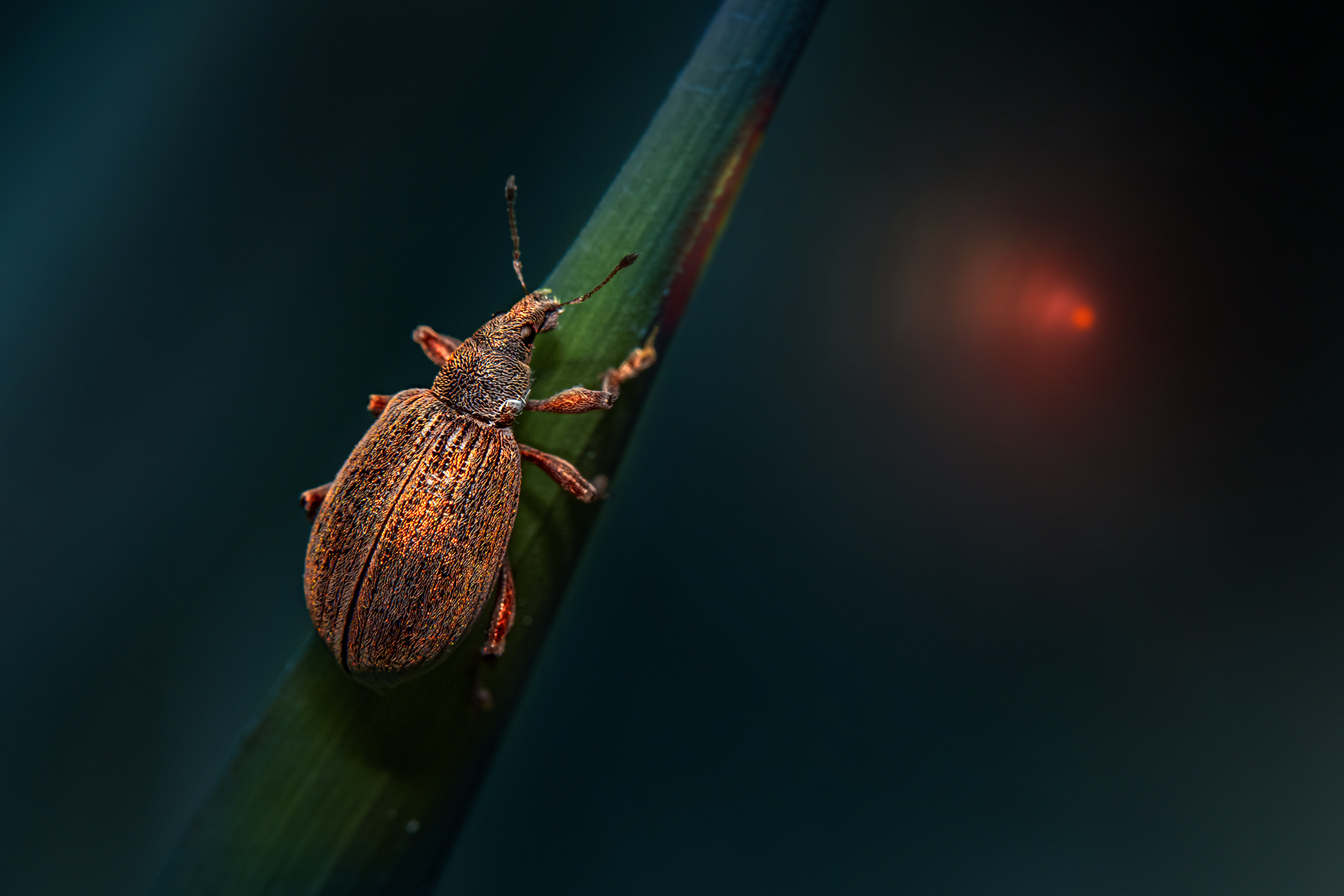Common Leaf Weevil (Phyllobius pyri) is a small beetle belonging to the family Curculionidae, often recognized for its distinctive elongated snout (rostrum). It is commonly found in Europe and known for its affinity for deciduous trees and shrubs. Here is a brief overview of this species:
Description
- Appearance: Phyllobius pyri has a compact, oval-shaped body, typically ranging in color from metallic green to blue-green, though some individuals can appear brownish or black. The color is due to the presence of scales or setae (tiny hair-like structures) that cover the exoskeleton. Over time, these scales can wear off, leaving the beetle with a duller appearance.
- Size: Adults measure about 5 to 7 mm in length, with the characteristic elongated snout or rostrum that is typical of weevils.
- Distinctive Features: The antennae are “elbowed” and clubbed at the ends, extending from the middle of the snout. The legs are relatively long, and the body is covered with a dense coat of scales, which often gives the beetle a shimmering effect in bright light.
Distribution and Habitat
- Geographical Range: Phyllobius pyri is widespread across Europe, including the British Isles, and extends into parts of Asia. It is typically found in temperate regions.
- Preferred Habitats: These weevils are most commonly found on deciduous trees and shrubs, such as oak, hazel, willow, birch, and fruit trees. They are frequently seen in gardens, orchards, woodlands, and hedgerows.
Behavior and Ecology
- Feeding Habits: Adults feed on the leaves of various trees and shrubs, chewing distinctive holes in the foliage. They primarily feed on young, tender leaves, which can result in minor defoliation, although they are not typically considered a major pest.
- Reproduction: After mating, females lay eggs in the soil or in leaf litter during the spring. The larvae hatch and then feed on plant roots underground, which can sometimes cause damage to young plants or seedlings.
- Life Cycle: The common leaf weevil undergoes complete metamorphosis with four distinct life stages: egg, larva, pupa, and adult. Adults are typically seen from late spring to early summer.
Interesting Facts
- Defense Mechanisms: When threatened, Phyllobius pyri adults may drop from leaves and feign death, a behavior known as thanatosis. This tactic helps them avoid predation.
- Mimicry and Camouflage: The weevil’s green coloration provides excellent camouflage against the foliage, helping it avoid predators like birds and other insectivores.
- Polymorphism: Individuals of this species can vary greatly in color and size, depending on environmental conditions and age, making them a fascinating subject for studies on insect adaptability and variation.
Importance in Ecosystem
- Role in Food Web: As herbivores, common leaf weevils play a role in controlling the growth of various plants and serve as prey for a wide range of predators, including birds, spiders, and predatory insects.
- Indicators of Environmental Health: The presence of these beetles can be an indicator of the health of a local ecosystem, as they thrive in well-vegetated areas with a diversity of plant species.
While Phyllobius pyri may not be well-known outside of entomological circles, it is a common sight in many European habitats, contributing to both the diversity and the dynamic interactions within its ecosystem.
Visited 195 times, 26 visit(s) today
Views: 334
Subscribe to the newsletter:
